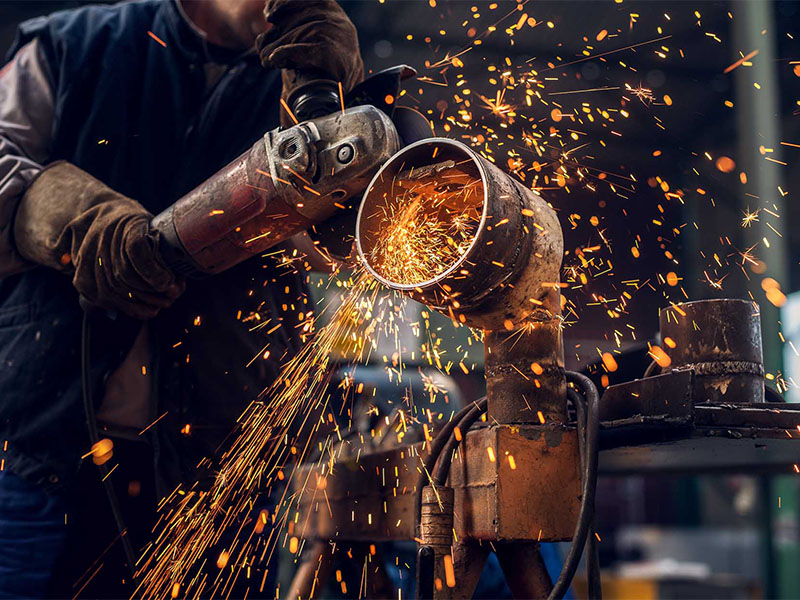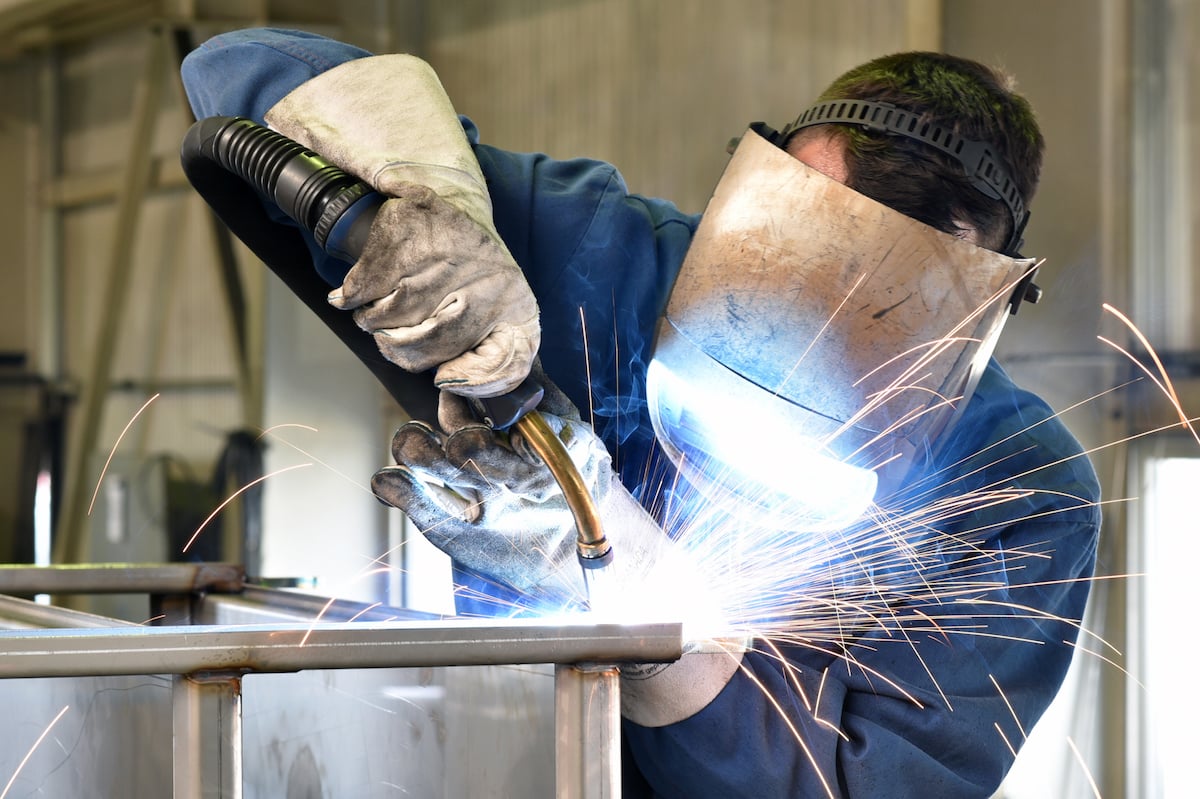What triggers weld porosity and how Belgrade Welding handles them
Wiki Article
Usual Welding Repair Service Issues and Just How to Address Them Efficiently
Welding repairs frequently encounter an array of problems that can jeopardize the stability of the end product. Common troubles include insufficient infiltration, porosity, and misalignment, amongst others. Each issue presents one-of-a-kind difficulties that call for specific techniques for resolution. Comprehending these problems is crucial for welders intending to enhance their abilities and results. This discussion will discover these common welding repair service problems and efficient approaches to address them.Poor Infiltration
Inadequate penetration takes place when the weld steel stops working to completely fuse with the base product, causing weak joints and possible architectural failures. This concern commonly comes from not enough warmth input, incorrect electrode angle, or incorrect welding rate. Welders may experience insufficient penetration due to a mistake of the needed parameters for a details product thickness or type. Additionally, contamination on the base material's surface can impede reliable bonding, exacerbating the trouble. To address insufficient infiltration, welders should assure suitable settings on their equipment and preserve a tidy work surface. Routine assessment of welds is recommended to identify any type of deficiencies early, permitting for timely adjustments and the prevention of compromised architectural integrity in bonded settings up.Porosity
Porosity is an usual issue in bonded joints that materializes as tiny gas bubbles trapped within the weld steel. This issue can jeopardize the honesty of the weld, leading to lowered stamina and prospective failure under anxiety. Belgrade Fabrication. Porosity commonly arises from contamination, dampness, or incorrect welding strategies, which enable gases to leave into the liquified weld swimming pool. To deal with porosity, welders should guarantee proper surface area prep work, preserve a clean workplace, and utilize suitable welding specifications. Additionally, selecting the best filler product and shielding gas can reduce gas entrapment. Normal inspection and testing of welds can aid determine porosity early, guaranteeing prompt corrective actions are taken, thereby preserving the top quality and dependability of the bonded frameworkMisalignment
Imbalance in welding can arise from numerous aspects, consisting of incorrect configuration and thermal development. Recognizing the source is vital for effective resolution. A number of adjustment methods are offered to straighten components and guarantee structural stability.Root causes of Imbalance
Welding misalignment usually originates from a selection of underlying issues that can jeopardize architectural stability. One key reason is inappropriate fit-up of components prior to welding, which can cause voids and uneven surface areas. Variants in thermal expansion during the welding procedure can also result in distortion, especially if the materials being signed up with have different coefficients of expansion. Additionally, inadequate securing and fixturing may fall short to hold parts safely in position, causing movement throughout welding. Badly conserved devices, including welding devices and tools, might present incongruities in the weld grain, additional contributing to imbalance. Operator error, stemming from insufficient training or experience, can additionally play a considerable function in developing misaligned welds.
Modification Techniques Offered
Attending to misalignment efficiently needs a mix of corrective strategies tailored to the certain concerns available. One usual technique is using fixtures or jigs to hold components in the proper placement during welding, ensuring regular alignment. Furthermore, preheating the products can assist lower distortion and enhance fit-up. For significant imbalance, mechanical adjustment techniques, such as using hydraulic jacks or clamps, can be used to fix the position before welding. Post-weld warmth treatment might additionally be required to alleviate tensions brought on by imbalance. Ultimately, careful inspection and change during the arrangement phase can protect against imbalance problems from becoming substantial problems, promoting a smoother welding process and boosting general structural stability.Distortion
Distortion is a typical challenge in welding that can emerge from numerous elements, including irregular heating & cooling. Understanding the reasons for distortion is necessary for carrying out efficient avoidance strategies. Resolving this concern not only boosts architectural integrity however likewise improves the total quality of the weld.Sources of Distortion
When based on the intense warm of welding, products frequently undertake modifications that can cause distortion. This phenomenon primarily occurs from thermal expansion and contraction throughout the welding process. As the weld area warms up, the material broadens; upon cooling, it contracts, which can develop inner stress and anxieties. Additionally, irregular home heating throughout a work surface can intensify these tensions, resulting in bending or bending. The kind of product additionally plays a substantial function; steels with varying thermal conductivity and coefficients of growth may respond in different ways, causing unforeseeable distortions. Inadequate joint layout and inadequate fixturing can add to misalignment throughout welding, increasing the likelihood of distortion. Recognizing these causes is important for efficient welding repair and avoidance methods.Avoidance Techniques
Effective avoidance strategies for distortion throughout welding concentrate on controlling warm input and ensuring correct joint layout. Preserving a constant heat input aids to minimize thermal expansion and tightening, which can lead to distortion. Using techniques such as pre-heating the workpiece can also minimize the temperature slope, promoting uniform home heating. Furthermore, choosing proper joint designs, such as T-joints or lap joints, can improve security and minimize stress concentrations. Executing correct fixturing to safeguard the work surfaces in position even more help in preserving placement throughout the welding process. Staggered welding series can disperse heat extra evenly, stopping localized distortion. By using these strategies, welders can considerably lower the possibility of distortion and enhance the overall top quality of their welds.Fracturing
Fracturing is a common issue run into in welding repairs, frequently resulting from various variables such as incorrect cooling rates, product option, or poor joint prep work. The event of cracks can considerably jeopardize the stability of the weld, resulting in potential failings throughout procedure. To address this concern, welders must first analyze the root triggers, making sure that products work and properly structural welding picked for the specific application. Furthermore, managing the cooling rate during the welding procedure is vital; quick cooling can generate anxiety and lead to breaking. Appropriate joint style and prep work also add to lessening the danger. Executing these methods can enhance weld top quality and longevity, eventually decreasing the probability of fracturing in ended up weldments.
Insufficient Fusion
A considerable problem in welding repair work is incomplete combination, which occurs when the weld metal does not effectively bond with the base material or previous weld passes - Montana Mobile Welding and Repair Welding. This defect can cause weak points in the joint, possibly jeopardizing the honesty of the bonded framework. Elements adding to incomplete combination consist of insufficient warmth input, improper welding technique, and contamination of the surface areas being signed up with. To address this problem effectively, welders should assure correct pre-weld cleansing and surface area prep work, as well as readjust their welding specifications to attain sufficient penetration and fusion. Regular evaluation during the welding process can also assist recognize insufficient combination early, allowing for prompt corrective steps to improve the total high quality of the weldOverheating
While welding repair services can boost architectural integrity, overheating provides a considerable obstacle that can cause product destruction. Too much warmth throughout welding can alter the mechanical homes of metals, causing minimized toughness, increased brittleness, and bending. This phenomenon is specifically critical in high-stress applications where structural dependability is paramount. Determining overheating can involve visual inspections for discoloration or distortion, along with keeping track of temperature level throughout the welding procedure. To reduce the threats related to overheating, welders ought to use suitable methods, such as controlling warm input, readjusting travel rate, and utilizing appropriate filler products. In addition, executing pre- and post-weld warmth treatments can help restore material homes and enhance the overall top quality of the repair, making certain lasting efficiency and safety.Frequently Asked Questions
What Are the Typical Signs of a Welding Problem?

How Can I Evaluate My Welds for Top quality?
To evaluate welds for high quality, one can use visual assessments, ultrasonic testing, and radiographic methods. Each technique ensures structural integrity, identifies defects, and validates adherence to defined standards, ultimately improving the reliability of the welded joints.What Security Preventative Measures Should I Take While Welding?
When welding, one must focus on safety by wearing proper personal safety equipment, guaranteeing correct air flow, safeguarding combustible products away, maintaining a tidy workspace, and understanding environments to stop mishaps and injuries.Can I Repair a Weld Without Redoing the Entire Joint?
Repairing a weld without redesigning the whole joint is possible, depending upon the damage (Montana Mobile Welding and Repair Belgrade Welding). Techniques such as grinding, adding filler material, or making use of a welding process can properly resolve particular problems while maintaining the surrounding frameworkWhat Equipment Are Important for Effective Welding Fixes?
Vital devices for reliable welding repairs include a welding machine, cord brush, grinder, protective equipment, clamps, and filler products. Each device plays a crucial function in making sure top quality and safety during the repair service process. Porosity generally develops from contamination, moisture, or inappropriate welding techniques, which enable gases to escape right into the liquified weld swimming pool. Badly kept tools, consisting of welding machines and tools, might introduce disparities in the weld bead, further contributing to imbalance. When subjected to the extreme warm of welding, products commonly undertake adjustments that can lead to distortion. Cracking is an usual concern encountered in welding repair work, typically resulting from different elements such as inappropriate air conditioning rates, product option, or insufficient joint prep work. A significant concern in welding repairs is incomplete combination, which occurs when the weld steel does not appropriately bond with the base product or previous weld passes.Report this wiki page